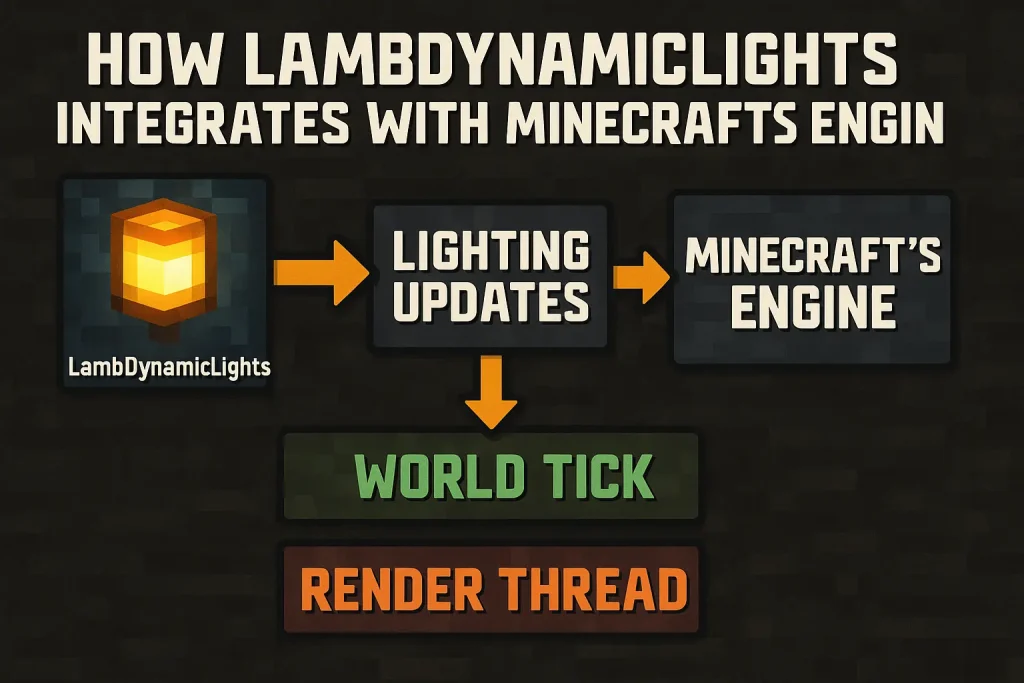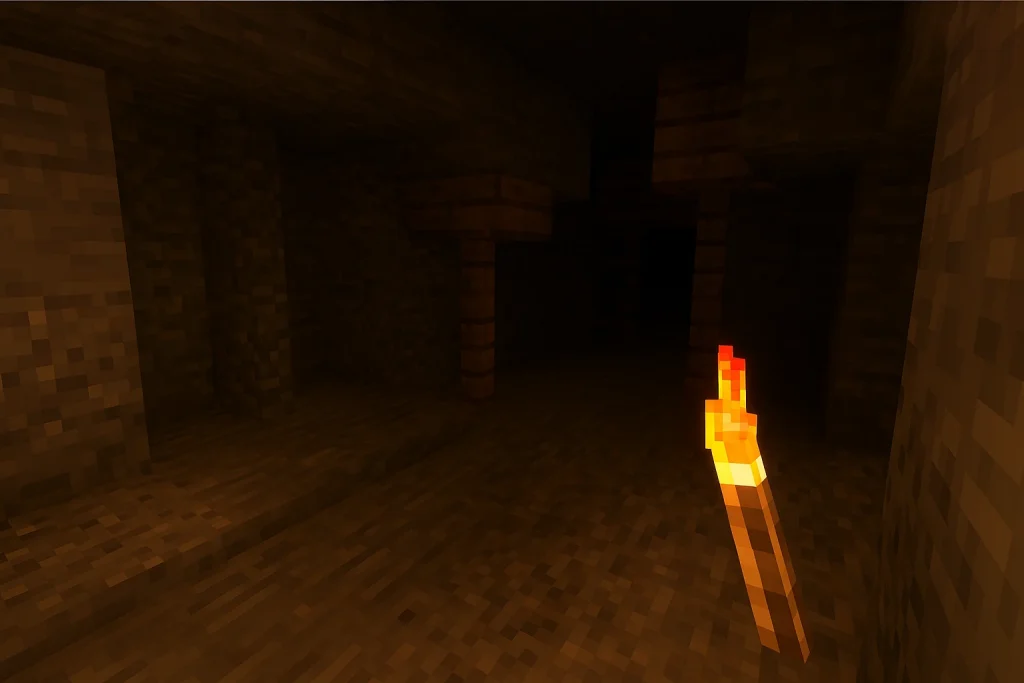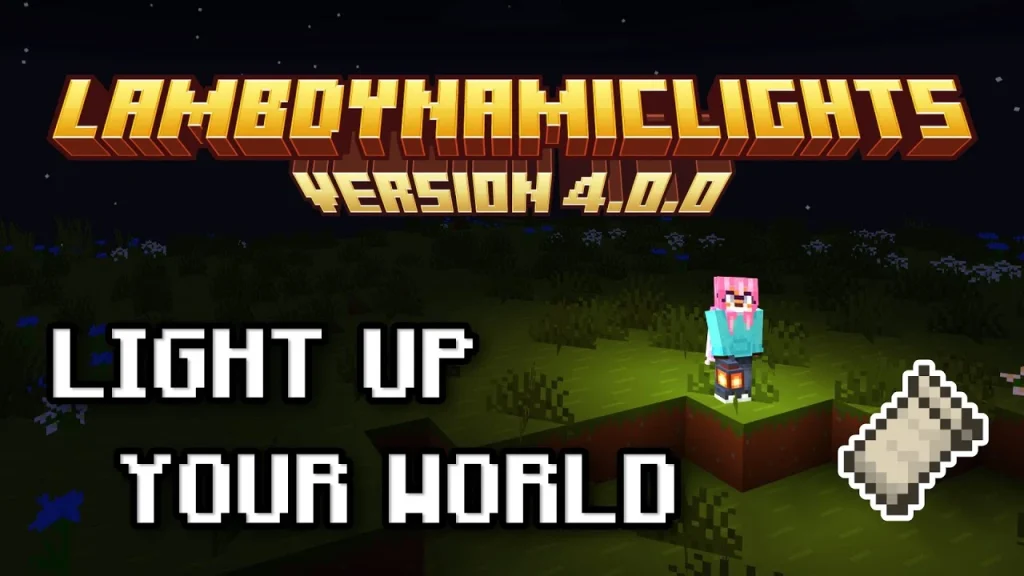Discover How LambDynamicLights Integrates with Minecraft’s Engine with real-time lighting. Learn about hooks, rendering, optimization & performance insights.
LambDynamicLights redefines the experience by adding real-time, item-based illumination, lighting up your surroundings with every torch you hold or mob you follow. But how does it interact with Minecraft’s engine?
This article delivers a comprehensive technical breakdown of how LambDynamicLights injects into the game’s rendering pipeline, intercepts lighting calls, and optimizes updates for performance. We’ll explore the inner workings:
from block-based vanilla lighting through mixins, rendering hooks, and real-time recalculation. Whether you’re a mod developer, tech-savvy gamer, or curious engineer, this guide illuminates the unseen magic behind the dynamic glow.
Minecraft’s Default Lighting System
Block-Based Lighting Basics
Minecraft uses a block-centric light engine. Every light source (e.g. torch, flowstone) emits a light level value, propagated using a light queue. Neighboring blocks receive decreasing intensity until the cutoff.
Light Engine Pipeline
The game initializes a light queue on chunk load, calculates light levels, and stores them in chunk data. Changes like placing torches trigger block light updates and lighting recalculations.
Static Lighting Drawbacks
This method doesn’t support mobile light. Holding a torch won’t cast light until you place it—breaking immersion. LambDynamicLights addresses this gap by tapping into the engine at runtime.
Dynamic vs. Static Lighting
What Is Dynamic Lighting?
Dynamic light adjusts in real-time as objects move. Players carry light, mobs illuminate as they wander, dropped glowstones shine—without manual placement.
Benefits of Real-Time Illumination
- Full immersion in caves and dark biomes
- Ambient lighting in builds without placing blocks
- Live effects with mobs or burning objects
Performance Tradeoffs
Dynamic lighting can overload the CPU or GPU. LambDynamicLights balances realism with performance using clever batching and updates throttling.
Mod Entry Points and Minecraft Hooks
Fabric Modloader Hooks
Using Fabric, LambDynamicLights registers event listeners for client ticks and renders events and light updates. This lets it run code right before or after vanilla routines.
Mixin Injection
The mod uses Mixin to intercept core methods like updateLightLevel, renderEntities, and chunk load callbacks. This enables adding glows without rewriting Minecraft.
Rendering Callbacks
LambDynamicLights hooks into both pre-render and post-render events of the entity renderer. It uses these to inject custom point-light data into the shader stack.
Light Source Detection and Tracking
Scanning for Light Emitters
Every tick, LambDynamicLights scans loaded entities and items in hand or inventory. It checks for light-emitting properties using either built-in values or modded source compatibility.
Attaching to Moving Entities
Once identified, the mod attaches a dynamic light source to entity coordinates. As they move, the source updates its position without altering world chunks.
Managing Light Pools
The mod organizes active light sources in pools, updating only those within a configurable radius. This prevents global recomputation at high FPS.
Updating the Light Engine in Real-Time
Light Level Recalculation
LambDynamicLights calls LightEngine.checkBlock() or uses Mixins on BlockLightCache to force dynamic recalculation in small volumes around emitters.
Engine vs. Dynamic Updates
Unlike vanilla’s chunk-wide updates, this uses sub-chunk-only recalculations triggered when sources move more than one block or every update interval milliseconds.
Optimization
Light updates are batched every few ticks (e.g., 50ms) and constrained to ranges—reducing CPU overhead while retaining glow responsiveness.
Rendering Pipeline Integration
Entity Rendering Injection
Dynamic light sources require pushing extra data into shaders. LambDynamicLights uses mixins in EntityRenderer and LightmapTextureManager.
Shader Compatibility
With Sodium/Iris, the mod passes light data to fragment shaders, where a point light calculation is done per pixel—blending dynamic glow with global light.
Vanilla Fallback
Without Sodium or Iris, dynamic lights are simulated using lightmaps and OpenGL calls, ensuring compatibility with basic setups.
Performance Optimization Techniques
Batch vs Per-Tick Updates
The mod groups light updates in timed batches rather than executing every tick, controlling overhead.
Adjustable Light Range
Configurable lightRange parameter (~8–16 blocks). A larger range improves visuals but uses more resources.
Culling Non-Visible Sources
Sources outside the camera frustum, hidden behind blocks or outside render distance, are ignored.
Entity Pool Limits
The system skips dynamic lighting for off-screen dropped items or mobs beyond a radius.
Handling Edge Cases and Bugs
Chunk Unload/Reload
Recalculations are triggered during chunk unloads and reloads to avoid lingering light artifacts.
Dimension and Teleport Handling
Listeners on dimension change events clear/detach all dynamic sources, preventing the carry-over of light into new realms.
Mod Conflict Handling
The mod includes compatibility libraries to detect other mods modifying lighting and apply soft overrides.
Configuration and Customization
In-Game Settings
Using ModMenu, players adjust:
- Enable/Disable dynamic lighting
- lightRange, updateInterval
- Entity lighting toggle
Toml Configuration
Advanced tuning is done via lambdynamiclights.toml:
toml
CopyEdit
lightRange = 12
updateInterval = 50
entityLighting = true
Other entries include playerRange, itemRange, and enableShadersCompat.
Developer Options
For contributors, the config enables debug logs, performance profiling, and alternative light engine hooks.
Developer Insights and Mod Internals
Codebase Structure
- core/: mixins and hooks
- common/: logic and config
- compact/: mod integration handlers
Key Classes
- DynamicLightHandler: tracks all active sources
- MixinLightEngine: intercepts vanilla lighting calls
- MixinEntityRenderer: injects render-time shader logic
Contribution
Open-source on GitHub under LGPL 3.0. Developers can submit patches, add compat with new mods, or optimize update routines.
Conclusion
LambDynamicLights represents a sophisticated engineering feat within Minecraft modding. By deeply integrating with the block light engine, entity rendering, and performance optimizations, it brings a real-time glow to dynamic gameplay elements.
Whether through mixins, event hooks, or shader data injection, it balances immersive visuals and efficiency. Understanding its internal workings offers insight into game modding at scale and helps users customize settings for their hardware.
For those fascinated by game engines, rendering, or mod architecture, LambDynamicLights stands as a testament to creative, high-performance design.



